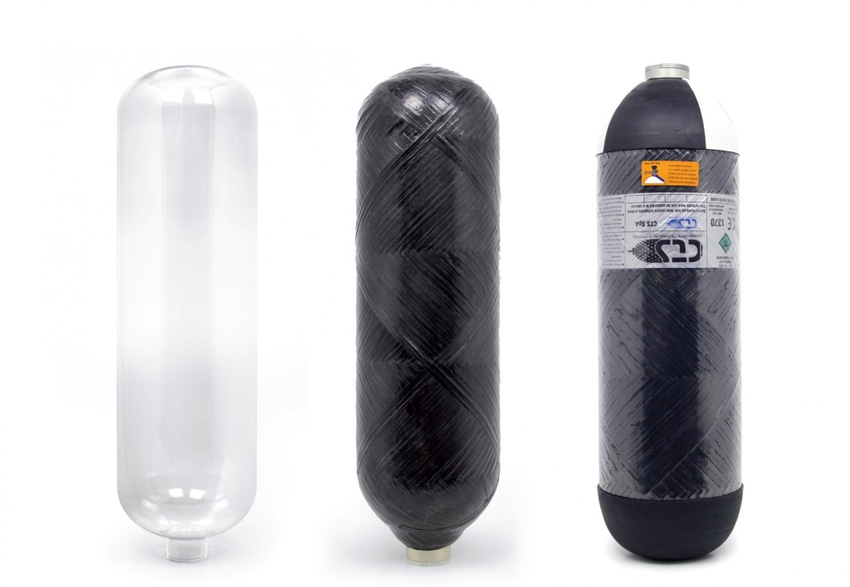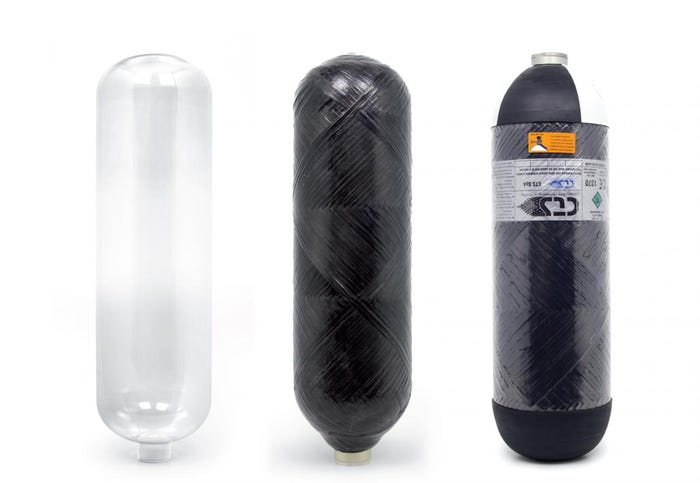When it comes to pressure tanks and cylinders, it's important to get it absolutely right. Which is why, when CTS Composite Technical Systems, an innovative company specialized in the manufacture of pressurized cylinders, needed help with the development of an innovative range of ultralight high-performance compressed gas cylinders, it called in PET preform technology specialist SIPA, to supply the expertise it was lacking.
November 5, 2014

When it comes to pressure tanks and cylinders, it's important to get it absolutely right. Which is why, when CTS Composite Technical Systems, an innovative company specialized in the manufacture of pressurized cylinders, needed help with the development of an innovative range of ultralight high-performance compressed gas cylinders, it called in PET preform technology specialist SIPA, to supply the expertise it was lacking.
CTS, headquartered in Udine (Italy), was in the process of designing a new "Type IV" pressure tank, when it ran into difficulty. Type IV pressure vessels offer various advantages, including a lighter weight, less maintenance and a longer service life. Unlike Type II and III tanks, which have a metallic liner over which an overwrap such as carbon fiber or fiberglass is applied in a particular pattern over the liner's cylinder sidewall, Type IV cylinders feature (thermo)plastic liners inside a fully wrapped protective skin made from a continuous carbon fiber reinforced plastics composite. The overwhelming majority of type IV pressure cylinders on the market today have blow-molded liners made of high density polyethylene.
 CTS had come up with the idea of using PET, which would not only be lighter, it would also enhance the liner's oxygen barrier properties by as much as 100 times. However, the company lacked the knowhow to create a PET liner that fit the specifications. CTS had developed its own rudimentary injection molding machine, as well as a simple blow molding machine, but was unable to produce liners with tolerances that were anywhere near acceptable: container dimensions could vary by a centimeter or more.
CTS had come up with the idea of using PET, which would not only be lighter, it would also enhance the liner's oxygen barrier properties by as much as 100 times. However, the company lacked the knowhow to create a PET liner that fit the specifications. CTS had developed its own rudimentary injection molding machine, as well as a simple blow molding machine, but was unable to produce liners with tolerances that were anywhere near acceptable: container dimensions could vary by a centimeter or more.
Working in tandem with the CTS team, SIPA's experts created a PET liner that was perfectly matched to the application. The two companies collaborated closely on container development, prototyping, testing, and production. For SIPA, the project also proved a valuable learning opportunity. "The collaboration with CTS has provided us with extra insight into the capabilities of PET as a packaging material," commented Mold Sales Director Alberto Uliana. "This is the very first time that we have worked on an application where internal pressures so high! We have all gained a lot from the experience."
CTS was delighted with the outcome of the collaboration: a product ready for the market that offers the very highest levels of safety. Production is now underway on a range of the new pressure cylinders, with volumes ranging from two to nine liters. The smallest weighs 0.9 kg, and the largest just 4.0 kg-around 30% lighter than a cylinder with an aluminum liner, and five times lighter than an all-steel one. They can all withstand a service pressure of 300 bar, and CTS gives them an unlimited service life. CTS has patented its new technology for making the PET liner around the world.
The two companies are now experimenting together with various types of plastics for the liners that could provide even higher performance in terms of oxygen barrier properties.
About the Author(s)
You May Also Like


